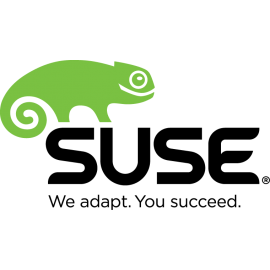SUSE-commissioned study says most large companies have moved or plan to move to OpenStack private cloud; challenged with ease of installation, skills shortage and vendor lock-in
Eighty-one percent of senior IT professionals are planning  tomove or are already moving to OpenStack private cloud, according to a study commissioned and released by enterprise Linux, cloud and storage infrastructure provider SUSE®. Most respondents are also concerned about installation challenges, possible vendor lock-in and a lack of OpenStack skills in the market.
tomove or are already moving to OpenStack private cloud, according to a study commissioned and released by enterprise Linux, cloud and storage infrastructure provider SUSE®. Most respondents are also concerned about installation challenges, possible vendor lock-in and a lack of OpenStack skills in the market.
“We believe the overall findings speak very positively about the level of trust and confidence that enterprises have in OpenStack,” said Ralf Flaxa, SUSE Vice President of Engineering. “Understandably, there are clear concerns among customers about how their cloud infrastructure should be integrated and managed. Provider of the original enterprise OpenStack distribution, SUSE has led the way with a production-ready OpenStack cloud solution that addresses customer concerns and challenges. We work closely with the OpenStack project and technology partners to deliver unique levels of flexibility, choice, training and support, helping businesses make the most of their private cloud investments without feared constraints.”
The study reveals the preferences, adoption levels and challenges of large companies when moving to a private cloud. Overall, the study indicates private clouds are:
-
Universally adopted: 90 percent of large companies say they have already implemented at least one private cloud within their business.
-
Trusted: 96 percent of respondents said they would use a cloud solution for business-critical workloads.
-
Increasingly open source: 96 percent of respondents believe there are business advantages to implementing an open source private cloud. The most common reasons for adopting private clouds were to reduce costs and/or because of budget constraints (67 percent), and to increase agility/innovation (77 percent) – advantages associated with open source solutions.
However, as enterprises increasingly look to OpenStack for their private cloud investments, they are also wary of challenges and complications, including:
-
High degree of difficulty: Half of all enterprises that tried to implement an OpenStack cloud have failed, and 65 percent of companies report they have found the implementation experience difficult. In addition, nearly half (44 percent) plan to download and install OpenStack software themselves, potentially adding to the degree of difficulty.
-
Vendor lock-in constraints: 92 percent of respondents have concerns about vendor lock-in when it comes to choosing a private cloud infrastructure solution.
-
Skills shortage: 86 percent of respondents said the lack of skills in the market is making their companies reluctant to pursue private cloud. In addition, 78 percent of companies that have yet to adopt private cloud are deterred by the skills shortage.
Al Sadowski, Research Director – Service Providers, for 451 Research, said, “Due to the complex nature of the projects, managed services and OpenStack distributions are increasingly the deployment choice for those users that remain supportive of the platform after struggling to find success with the do-it-yourself approach. We continue to see OpenStack becoming the de facto open source option for deploying private clouds.”*
Datalounges is a cloud service provider established to make the benefits of the OpenStack platform easily accessible to companies of all sizes. Datalounges partnered with SUSE because of SUSE OpenStack
Cloud’s reputation for being the fastest and easiest to deploy and manage, having the broadest interoperability, and for the ease with which it integrates into an existing data center environment. Kai
Kankaala, Board Adviser – Sales at Datalounges, said, “With the SUSE OpenStack Cloud platform, we benefit from built-in high availability features and fast deployment, so we can get new customers up and running very rapidly, while maintaining a standardized and updated environment and reducing overhead complexity to a minimum.”






